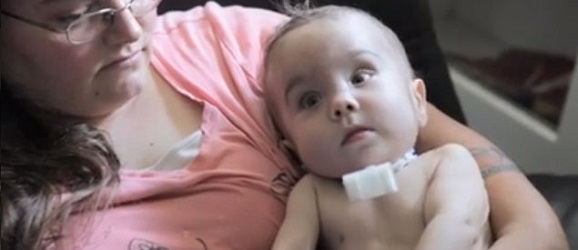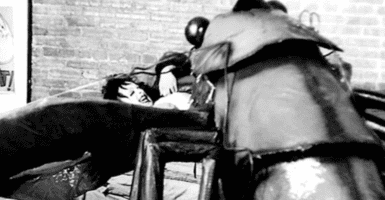3D Printing Saved A Child’s Life For The First Time
This article is more than 2 years old
 Rampant use of 3D printers is obviously right around the corner, and while some products are presented as mere novelty, the astounding range of medical innovations these devices could provide is making that corner all the more imperative to get around. Or we can just print up a battering ram and go through it. Once a thing starts saving people’s lives, there’s no turning back.
Rampant use of 3D printers is obviously right around the corner, and while some products are presented as mere novelty, the astounding range of medical innovations these devices could provide is making that corner all the more imperative to get around. Or we can just print up a battering ram and go through it. Once a thing starts saving people’s lives, there’s no turning back.
Kaiba Gionfriddo is the healthy, 20-month-old son of happy parents April and Bryan Gionfriddo, who live in Youngstown, Ohio. Not that long ago, the healthy and happy qualities were depressingly absent. At just six weeks old, Kaiba stopped being able to breathe, and after what I’m sure were some of the most stressful moments of Bryan’s life, Kabia was taken to the hospital. Doctors discovered the infant suffered from a rare condition called tracheobronchomalacia, which weakens the windpipe to the point of collapse, not allowing air through to the lungs. Even with a tube placed down his throat and the use of a ventilator, the situation persisted to the point where the child’s heart would stop on a daily basis.
This would be the point where Satan comes in and grants the child his health in return for the parents’ souls. Instead, Dr. Glenn Green and colleagues at the University of Michigan came in with a 3D-printed splint that had yet to go through clinical trials. They were granted emergency permission by the U.S. Food and Drug Administration, as well as Bryan and April, to go through with the procedure. “At that point, we would just take anything and hope it would work,” April said.
3D models of Kaiba’s trachea and bronchus were captured via a CT scan, and they printed out a splint that would perfectly fit around Kabia’s trachea, holding it open. The material used, polycaprolactone, will dissolve after three years, at which point the trachea will have grown and the splint would no longer be needed anyway. No more surgeries. Splints have always been carved by hand, a time-intensive process due to the specific sizes of each patient’s trachea. Conversely, this splint was made in about 24 hours and is a third of the cost of those made by hand.
There is no end in sight for this technology’s advancements. (This guy had most of his head replaced by a 3D printed skull, for instance.) And in the case of Kieba, who no longer needed the ventilator 21 days after the procedure, there were no downsides. Let’s all take a big sigh of relief for April and Bryan, shall we?












